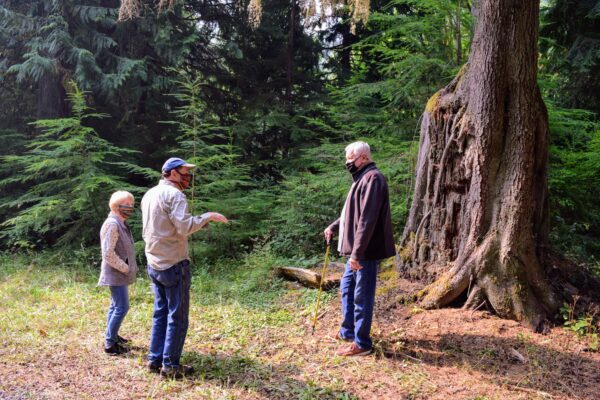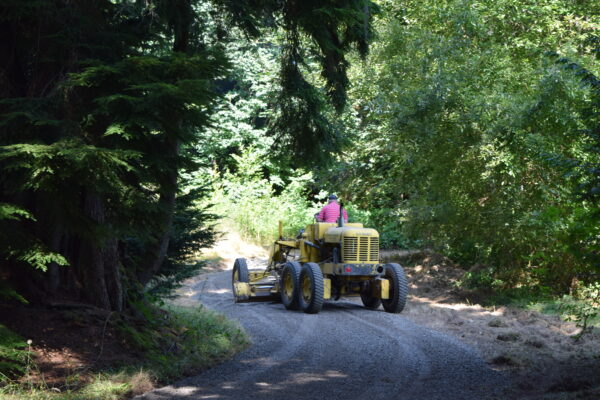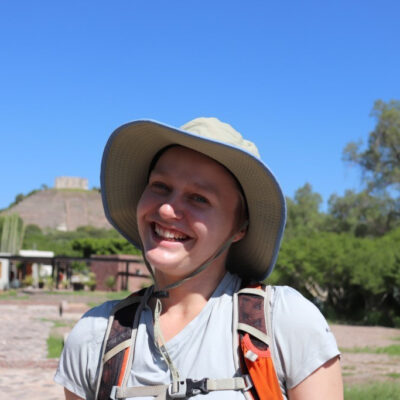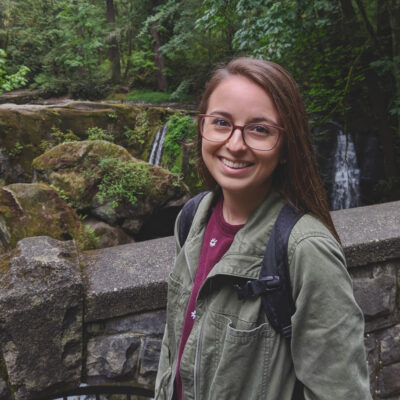(Population biologist Tom Doty nets Curley Creek for signs of amphibian residents.)
The Great Peninsula Conservancy (GPC) Land Labs program will utilize local protected lands to enhance the quality of Science, Technology, Engineering, and Math (STEM) education in Bremerton, Washington schools. Hands-on science projects will support the vision of the Washington State Environmental and Sustainability Literacy Plan and meet the requirements of Washington State Science and Learning Standards (WSSLS). The program will engage students directly in big picture environmental concerns affecting their local communities, and open students’ eyes to professional opportunities in the environmental science field. The Land Labs program will help prepare students from low-income families and underachieving schools for success in post-secondary education and careers in STEM.
If you’ve ever monitored one of GPC’s preserves with staff, the trip might have required the use of a machete, a pair of long-handled loppers, or at the very least some thick-soled boots. While swatting mosquitos, pushing gingerly past stinging nettle, and cursing the thinness of your jeans as they snagged devil’s club, you might have wondered what came over you when you volunteered to trace that long-lost property line. You may even have been tempted to head back to the car, but of course, you didn’t, because you reminded yourself that you were tough as nails, a hard-core GPC member, and also, where was the car?
In some cases, the inaccessibility of GPC lands is the very thing that has kept them safe. Not all protected lands are cut out to host trails, kiosks, trash cans, and port-o-pots. For more sensitive habitats, sometimes the best way to love them is to leave them alone, ensuring they remain havens for fish, birds, and wildlife. Those stinging nettles might be doing us all a favor in the long run!
And yet, during the time of a global pandemic, we have seen in our community the incredible importance of having nature available to us as we rest, restore, and sometimes just get through a day. For many, the only way to connect with friends and family in the last few months has been at local parks and trails. When GPC staff looked closely at the resources at our disposal, and at the needs of our community in crisis, a vision for the future took shape. Someday soon we will need to get people back out on wild land. And, when that is once again possible, GPC will need a place for all of us to gather.
Though many of GPC’s preserves serve best as untrammeled natural habitats, there are some landscapes that naturally lend themselves to visitors. This summer, GPC investigated possible locations for the development of a GPC Land Lab.
Part ambassador landscape and part outdoor classroom, the Land Lab site will showcase the best of GPC’s conservation, stewardship, and community engagement work. The site will serve as a home base for stewardship volunteers, as a starting point for interpretive walks, and as a place for youth to collaborate in community science and service-learning opportunities through the science classrooms of their local schools.

GPC’s Curley Creek Tyner Preserve will serve as the first focus site for the GPC Land Labs program. The 46 acres of forest safeguard nearly a mile of Curley Creek, an important fish-bearing stream supporting endangered steelhead and chinook salmon. The preserve’s high quality habitat will support meaningful community engagement and educational opportunities when it is safe to gather in the future. New this summer, the site features an improved driveway and parking area (thank you, Kitsap Quarry), a loop trail, and a native plant nursery. In addition, a wide variety of GPC volunteers have contributed their expertise to develop community science activities that have the potential to be adopted by classrooms with both in-person and virtual modules.

Projects include: the development of a birding field guide currently documenting 32 species; monitoring nesting boxes for birds, owls, and bats; monitoring game cameras that will provide long-term information about the presence of river otter, coyote, bear, and deer in the area; analysis of amphibian habitat; acoustic ecology studies of the salmon run in Curley Creek; performance of water quality assessments; and stewardship opportunities focused on invasive weed removal and trail building.
GPC will add additional preserves to the Land Labs program in strategic areas of our working region. Some of these locations will be publicly accessible year-round.

Funding from The Russell Family Foundation has supported the planning and execution of the new Land Labs program. In addition, GPC has received a capacity building AmeriCorps VISTA grant providing three to five years of funding for four AmeriCorps VISTA members.

Sierra Kross is the newly appointed Land Labs Education Coordinator and Janessa Hollmaier is the Land Labs Site Coordinator. In the spring, GPC will hire for a Development Coordinator and Volunteer and Outreach Coordinator. The primary goal of this team will be to develop the depth and breadth of the Lands Lab program. If you know anyone interested in learning more about GPC’s AmeriCorps VISTA positions, please have them contact Claire Voris at claire@greatpeninsula.org.

We are excited that when the time is right, GPC will be prepared to host you out on a GPC Land Lab site. Until then, know that across the peninsula, tens of thousands of acres remain thorny, uninviting, and very much protected for generations to come.


